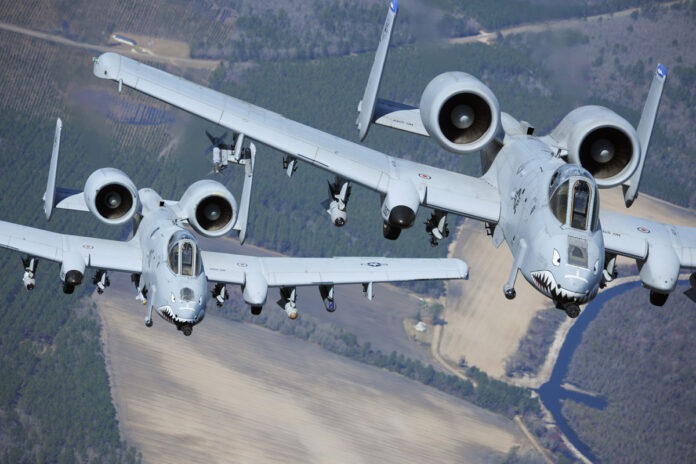In the halls of the 354th Fighter Squadron, a modest yet powerful plaque hangs, carrying a message that embodies the essence of their mission: “Our mission is an 18-year-old with a rifle. ATTACK!” Though unassuming, this cracked slab of plywood serves as a daily reminder to the A-10C Thunderbolt II pilots that their purpose is not self-glorification but to ensure the safety and success of ground troops—soldiers who depend on them for air support. For Col. Scott Mills, the 355th Wing commander at Davis-Monthan Air Force Base, the message is clear: “You are not the most important piece of this. You are here to attack the enemy and make sure friendly forces achieve their objectives and come home safe.”
This powerful ethos has carried the 354th through decades of combat and service. However, this storied squadron is now marking the end of an era, as the Air Force moves forward with plans to retire the A-10 fleet by 2029. The 354th will be officially inactivated on Friday, a symbolic milestone in the retirement process. The squadron’s last official sortie was flown in June, and the unit’s planes and personnel have begun dispersing to other assignments.
Below is a video of an A-10 saving a squad that was facing an ambush. The enemy was closing in on them from the top of the hill, forcing them to retreat into an open field. When the machine gunner could hear them nearing their position, he jumped out of the bush to keep them at bay long enough for air support. You’ll see the rounds hit, hear them, then you’ll hear the gun, then the plane.
You can find several of these types of videos posted from soldiers that have been saved by A-10’s on Youtube.
For Col. Mills, the end of the 354th is particularly poignant. It was the first squadron he joined as a young pilot soon after the September 11, 2001, attacks. Memories from his early missions in the A-10, such as flying alongside seasoned pilots during high-risk close air support missions, are etched in his mind. In one instance, Mills vividly recalls the tension of hearing a young soldier’s fearful voice over the radio, knowing that his mission was to provide the reassurance and firepower needed to save lives on the ground. His flight lead’s words after the mission have stayed with him: “We are not worth more than they are, and we have to be willing to risk just as much.”
The 354th’s legacy stretches far beyond these recent years. From flying P-51 Mustangs in World War II to F-105s in Vietnam, the Bulldogs have left an indelible mark on U.S. Air Force history. Acts of heroism, such as 2nd Lt. Royce Whitman Priest landing his P-51 to rescue a downed squadron commander in 1944 or Maj. Merlyn Hans Dethlefsen flying through a barrage of anti-aircraft fire in Vietnam, are among the many stories of valor that define this unit.
Since the 354th transitioned to the A-10 in 1991, its pilots have continued to set high standards for excellence. Recent missions, like Capt. Samantha Harvey and Maj. Tyler Schultz’s Distinguished Flying Cross-worthy efforts in Syria, underscore the squadron’s ongoing commitment to close air support. Over five intense hours, they dropped bombs and fired rounds from the A-10’s signature 30-millimeter cannon, protecting 50 U.S. soldiers and allies pinned down by enemy fire.
As the A-10 is phased out, its replacement, the F-35, will take on the mantle of close air support. While the tools of the trade may change, the legacy of the 354th and its ethos—dedicated to protecting those on the ground—will live on. The Bulldogs have been defined not by the aircraft they flew, but by the mission they carried out: ensuring that every soldier with a rifle comes home safe.


